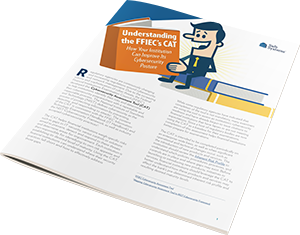
As the financial services industry has become more technology-driven and more complex operationally, user conferences have become key events along with industry association conferences. By providing a venue for banking professionals to collaborate directly with their technology providers and other peer institutions, user conferences represent a proven way for banks and credit unions to extend the ROI of their technology investments. Examiners and auditors recognize the importance of participation in these events and many now expect attendance to gain industry knowledge and strengthen existing vendor relationships.
Regulatory Expectations – Vendor Management
Examiners are increasingly focused on how a financial institution manages their vendors. According to the Federal Financial Institutions Examination Council (FFIEC) IT Examination Handbook, “User groups are another mechanism financial institutions can use to monitor and influence their service provider. User groups can participate and influence service provider testing (i.e., security, disaster recovery, and systems) as well as promote client issues. Independent user groups can monitor and influence a service provider better than its individual clients. Collectively, the group will constitute a significant portion of the service provider’s business. User groups offer advantages to both the service provider and the serviced institution by allowing customers to discuss and prioritize their concerns…service providers should obtain customer feedback though user groups or customer surveys.”
In addition to effective vendor management requirements, the FFIEC also requires employees of financial institutions to participate in ongoing education and technical expertise to remain in compliance.
Educational Benefits of a Users’ Conference
Regulatory and compliance issues aside, user conferences offer a host of benefits to participating banks and credit unions, such as:
Classroom Training
Well-designed webinars or online training sessions are great resources, but focused, in-person learning, and networking allows attendees to remain current on the latest technology solutions and enhancements, industry developments, and specific products and functionality that your vendor is working on. The opportunity to learn first-hand from industry and subject matter experts, as well as share your own experiences and expertise, really should not be underestimated.
User conference learning opportunities often consist of:
- Basic and advanced workshops or sessions
- Issue-focused roundtable discussions
- Networking opportunities with peers
- Software demonstrations
- Professional development courses
- Hands-on training and consultations with vendors
Best Practices
Many find the greatest value in user conference participation through peer discussions and open Q&A sessions on best practices. These sessions give customers access to some of the best information and insight on how other institutions are utilizing the vendor’s solutions to solve problems and drive efficiencies and profitability.
Networking
We know from experience that peer groups serve as the perfect environment to share and exchange ideas, concerns, successes and failures tied to the industry. Many community banks and credit unions share the same worries about technology, compliance, security, and business issues. These events provide a venue for you to hear others’ experiences and tap into their knowledge, providing you the opportunity to make industry friends and gain a trusted group of individuals you can rely on in the future.
The Safe Systems National Customer User Conference, NetConnect™, is less than a month away. This event will bring Safe Systems’ employees and strategic partners together with a variety of banking professionals representing technology, compliance, operations and management roles.
We understand the value of user conferences and we use that opportunity to meet with a selection of customers (Customer Advisory Board) to discuss existing and new products and services that will meet their future business goals.
If you’ve never been to a user conference, don’t take our word for it. Here’s what a few of our customers have said:



































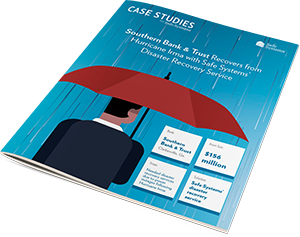







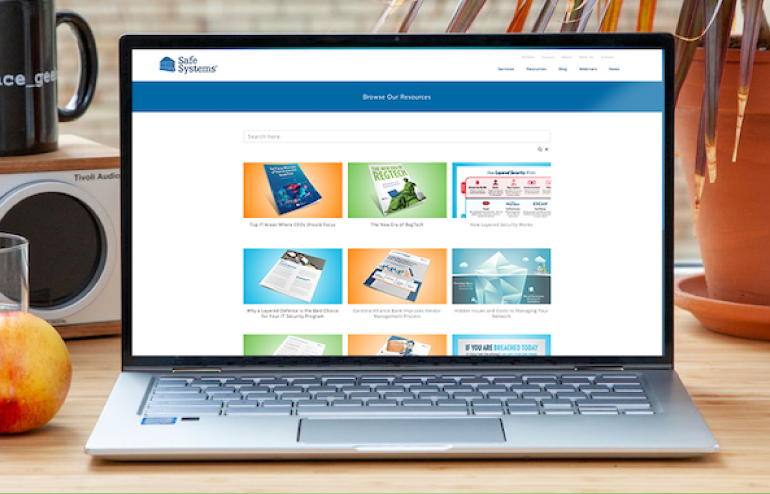















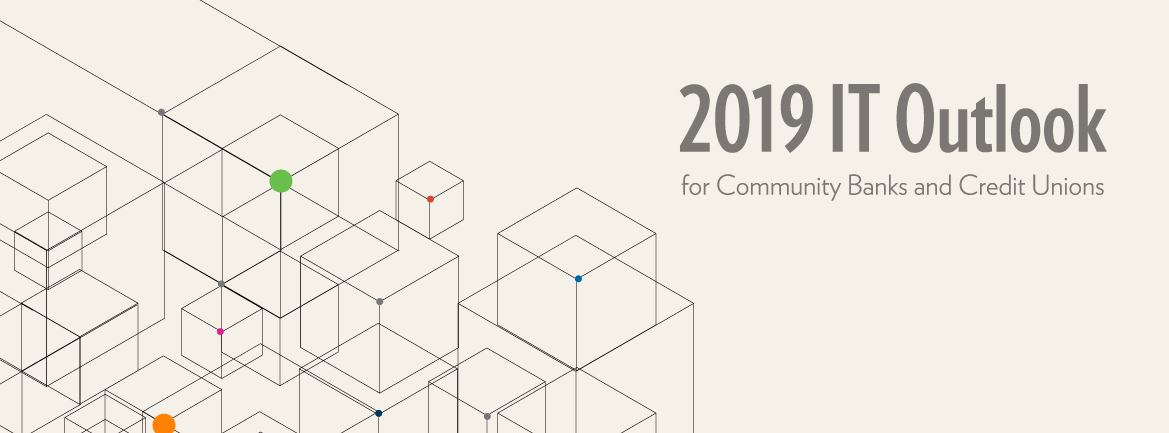



















 Disaster recovery is a concern for all banks and credit unions, regardless of size and location, but the hard truth is that a number of institutions are not adequately prepared for emergency situations and are unable to quickly recover from a disaster. This goes against FFIEC compliance regulations and can also equal significant revenue losses and reputational damage.
Disaster recovery is a concern for all banks and credit unions, regardless of size and location, but the hard truth is that a number of institutions are not adequately prepared for emergency situations and are unable to quickly recover from a disaster. This goes against FFIEC compliance regulations and can also equal significant revenue losses and reputational damage.






























 RegTech has made a big impact on the industry, but this is just the beginning. These solutions are more important than ever as the number of regulatory changes rises along with an increased use of technology and
RegTech has made a big impact on the industry, but this is just the beginning. These solutions are more important than ever as the number of regulatory changes rises along with an increased use of technology and 

 Community financial institutions depend on their
Community financial institutions depend on their 






 The complete report provides credit union executives with valuable peer-to-peer information to better understand the current IT environment within community banks and credit unions nationwide, while also helping improve decision making within their own institution in 2018 and beyond.
The complete report provides credit union executives with valuable peer-to-peer information to better understand the current IT environment within community banks and credit unions nationwide, while also helping improve decision making within their own institution in 2018 and beyond.


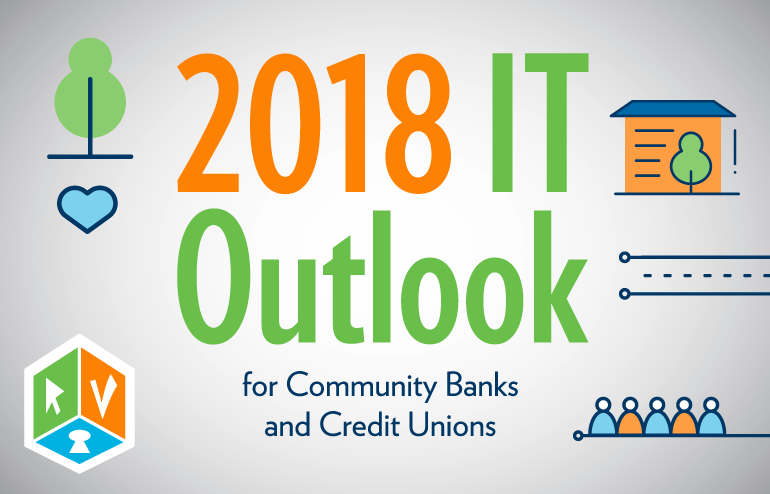







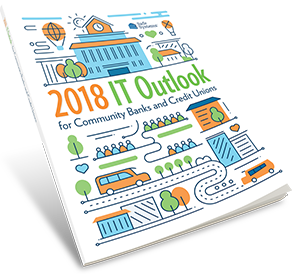


 The bank sought a trusted technology partner that clearly understood IT and compliance processes for financial institutions and had the expertise to monitor and manage the network efficiently. The bank’s new CEO had previous experience working with Safe Systems while at another bank and recommended they contact the outsourced IT provider. The bank chose to partner with Safe Systems and utilize its NetComply® One IT network management solution.
The bank sought a trusted technology partner that clearly understood IT and compliance processes for financial institutions and had the expertise to monitor and manage the network efficiently. The bank’s new CEO had previous experience working with Safe Systems while at another bank and recommended they contact the outsourced IT provider. The bank chose to partner with Safe Systems and utilize its NetComply® One IT network management solution. 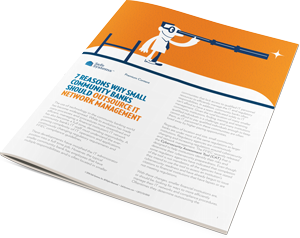



 While it is true that outsourcing can be expensive, the benefits have proven to consistently
While it is true that outsourcing can be expensive, the benefits have proven to consistently  It is simply no longer necessary for IT partners to be onsite to
It is simply no longer necessary for IT partners to be onsite to  Regardless of location and size, small community banks and credit unions are under most of the same regulations as larger institutions, forcing a small IT staff to be well-versed in all regulatory guidance from cybersecurity to disaster recovery to meet examiner expectations. Auditors and examiners expect thorough documentation to prove that the institution’s daily practices match its defined policies and procedures. Financial institutions should not wait for a negative review finding to take a proactive approach to network management. Working with service providers that have dedicated staff and experts who understand the financial industry’s regulatory requirements and best practices ensures the required planning and reporting is completed in a timely manner.
Regardless of location and size, small community banks and credit unions are under most of the same regulations as larger institutions, forcing a small IT staff to be well-versed in all regulatory guidance from cybersecurity to disaster recovery to meet examiner expectations. Auditors and examiners expect thorough documentation to prove that the institution’s daily practices match its defined policies and procedures. Financial institutions should not wait for a negative review finding to take a proactive approach to network management. Working with service providers that have dedicated staff and experts who understand the financial industry’s regulatory requirements and best practices ensures the required planning and reporting is completed in a timely manner.  There are hundreds of tasks that a small IT staff must complete on a regular basis to keep the bank’s operations running efficiently. Many community financial institutions have limited in-house resources dedicated to IT network functions. If a critical staff member goes on a
There are hundreds of tasks that a small IT staff must complete on a regular basis to keep the bank’s operations running efficiently. Many community financial institutions have limited in-house resources dedicated to IT network functions. If a critical staff member goes on a  Without a doubt, the core banking platform is central to all financial institutions. However, you may be taking unnecessary risk by relying on them for all your needs. An IT services provider can help alleviate the stress by evaluating the infrastructure of the bank without bias, and eliminating the unnecessary hardware, processes and tasks, helping with overall management and ongoing cost. Whether it be network management, security, or compliance, it is unlikely your core will match the expertise a specialized partner can offer. Network management providers offer unbiased advice, while also diversifying your risk.
Without a doubt, the core banking platform is central to all financial institutions. However, you may be taking unnecessary risk by relying on them for all your needs. An IT services provider can help alleviate the stress by evaluating the infrastructure of the bank without bias, and eliminating the unnecessary hardware, processes and tasks, helping with overall management and ongoing cost. Whether it be network management, security, or compliance, it is unlikely your core will match the expertise a specialized partner can offer. Network management providers offer unbiased advice, while also diversifying your risk. Many financial institutions struggle with choosing the right solutions partner. Smaller institutions in particular can benefit from outsourcing or partnering with a provider who offers network management solutions exclusively tailored for community banks and credit unions. Having a system in place that offers key features such as patch management, third party patching, antivirus, hardware and software inventory management, vulnerability remediation, and compliance-focused reporting to verify that your financial institution’s network is adhering to your policies and procedures is critical in today’s environment.
Many financial institutions struggle with choosing the right solutions partner. Smaller institutions in particular can benefit from outsourcing or partnering with a provider who offers network management solutions exclusively tailored for community banks and credit unions. Having a system in place that offers key features such as patch management, third party patching, antivirus, hardware and software inventory management, vulnerability remediation, and compliance-focused reporting to verify that your financial institution’s network is adhering to your policies and procedures is critical in today’s environment.






 Many financial institutions are turning to IT and security service providers to act as an extension of their organization and help augment internal technology and compliance resources. The right third-party solution provider can serve as a true partner and work alongside current staff to manage the technology, compliance and regulatory aspects of the institution. When the technology or compliance staff is out or unavailable, outsourcing select business processes helps fill the personnel gap and provide added stability for the institution and peace of mind to all.
Many financial institutions are turning to IT and security service providers to act as an extension of their organization and help augment internal technology and compliance resources. The right third-party solution provider can serve as a true partner and work alongside current staff to manage the technology, compliance and regulatory aspects of the institution. When the technology or compliance staff is out or unavailable, outsourcing select business processes helps fill the personnel gap and provide added stability for the institution and peace of mind to all.

